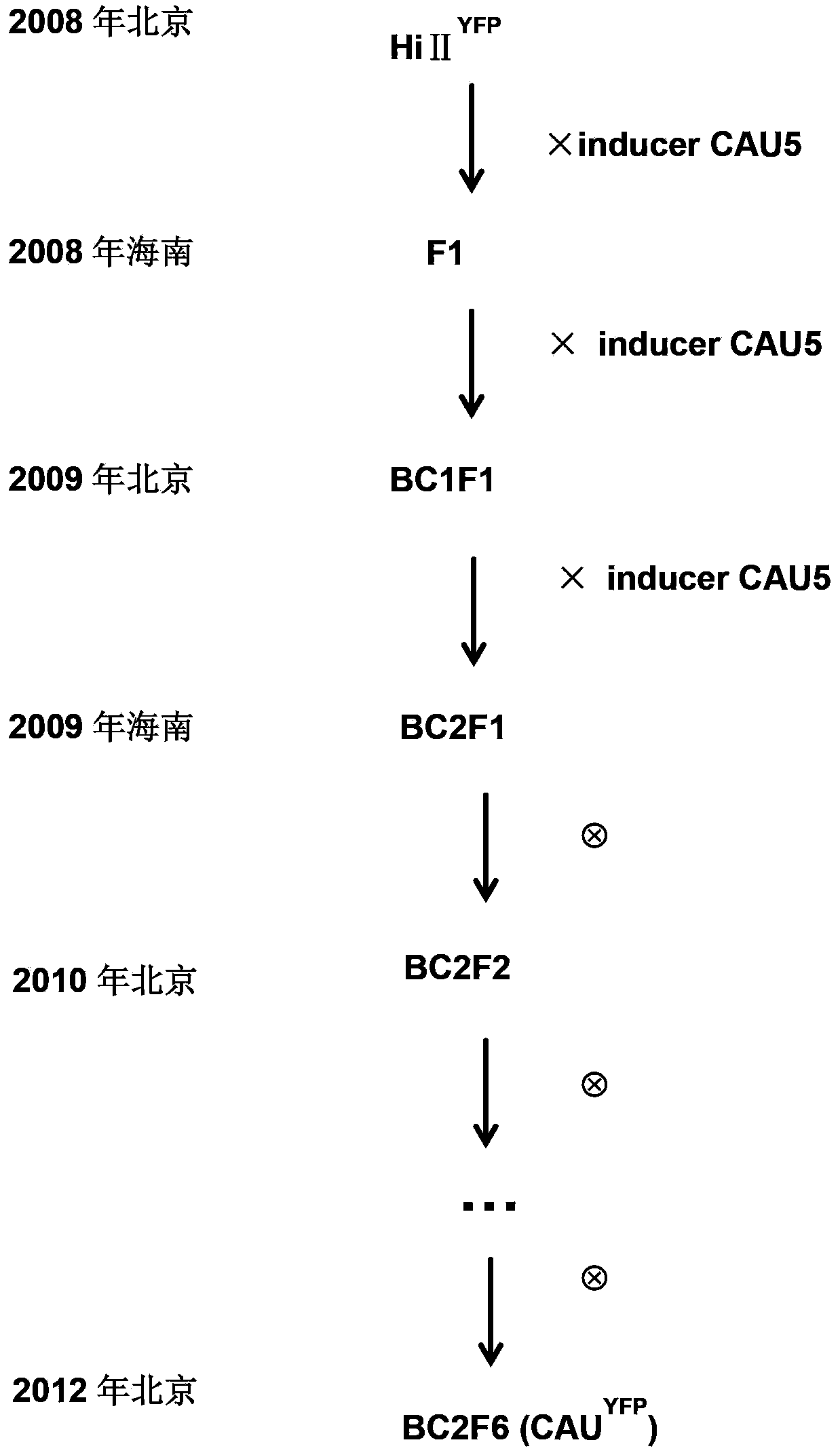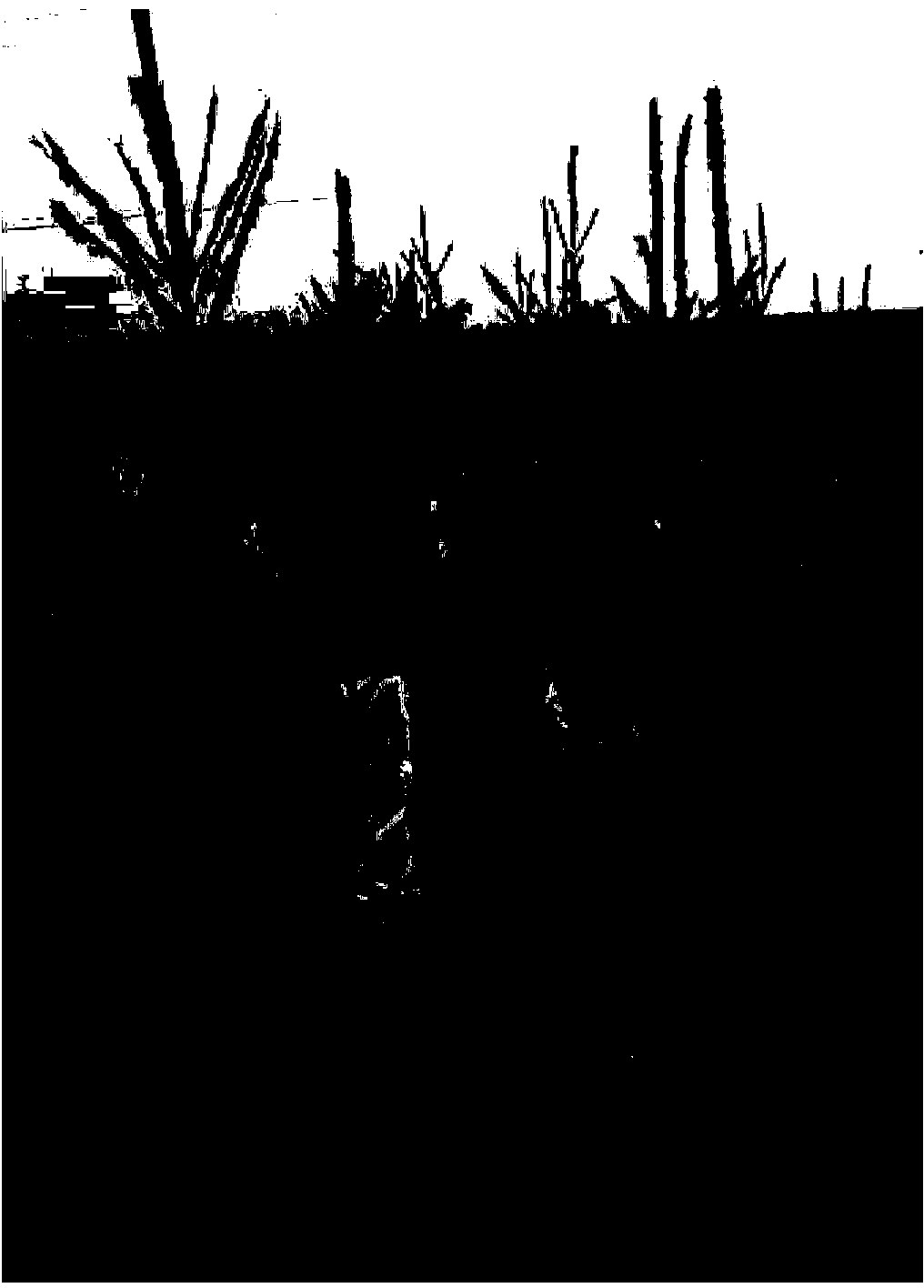Method for cultivating corn haploid inducer with higher corn haploid inductivity than corn haploid inducer CAU5
A haploid induction system and haploid induction technology are applied in chemical instruments and methods, botanical equipment and methods, recombinant DNA technology, etc., which can solve the problem of low commercial application value, inconvenient operation, haploid Difficulty and other issues
- Summary
- Abstract
- Description
- Claims
- Application Information
AI Technical Summary
Problems solved by technology
Method used
Image
Examples
Embodiment 1
[0055] Example 1. Cultivation of the maize haploid induction line CAU5 with a higher maize haploid induction rate than the maize haploid induction line CAU5 YFP
[0056] 1. The gene encoding the centromere-specific histone mutant was introduced into the first-generation hybrid plants of the corn inbred line HiIIA (female parent) and the corn inbred line HiIIB (male parent) to obtain the centromere-specific histone mutant. Histone mutant transgenic maize plant HiII YFP
[0057] The recipient of the transgene was the hybrid F1 generation of the inbred lines HiIIIA and HiIIB. The gene encoding centromere-specific histone mutant was introduced into the hybridization of maize inbred line HiIIA and maize inbred line HiIIIB through the expression vector pZY101-35S-CENH3-YFP encoding gene of centromere-specific histone mutant CENH3-YFP First generation (F1) plants. pZY101-35S-CENH3-YFP comes from Jiming Jiang's laboratory (Weiwei Jin, Jiming Jiang. Histone modifications associated...
Embodiment 2
[0093] Embodiment 2, maize haploid induction line CAU5 YFP induced maize haploid
[0094] The experiment adopts random block design in the field, and the experiment includes 2 treatments: maize haploid induction line CAU5 YFP Treatment and maize haploid induction line CAU5 treatment, the experimental method is as follows:
[0095] Maize Haploid Inducer Line CAU5 YFP The experimental method of processing is as follows: from the maize haploid induction line CAU5 of embodiment 1 YFP Randomly select 24 individual plants, mix the pollen of 24 individual plants and pollinate 10 Zhengdan 958 (female parents), conduct hybridization in the field to induce maize haploid, harvest hybrid seeds, and detect the haploid of hybrid seeds Number, calculate the maize haploid induction line CAU5 YFP For the haploid induction rate of Zhengdan 958, the results showed that a total of 2640 hybrid seeds were harvested, of which 312 were haploid, and the maize haploid induction line CAU5 YFP The h...
Embodiment 3
[0100] Example 3. Identification of maize haploid inducible line CAU5 by observing seed fluorescence YFP induced maize haploid
[0101] The maize haploid induction line CAU5 cultivated in Example 1 YFP Not only can it be used as a haploid inducing line to produce haploid in the offspring, but it can also stably express the fluorescent fusion protein CENH3-YFP and locate at the centromere, such as figure 2 . By directly observing the fluorescent signal of seeds under a stereoscopic fluorescence microscope, it can also be seen that the maize haploid induction line CAU5 YFP Differences in fluorescence from seeds of the maize haploid inducible line CAU5, as Figure 4 , the left two grains are maize haploid induction line CAU5 YFP The two grains on the right are the grains of the corn haploid induction line CAU5, and the corn haploid induction line CAU5 YFP It showed a more obvious YFP signal, and the maize haploid induced line CAU5 also showed some autofluorescence, but ther...
PUM
 Login to View More
Login to View More Abstract
Description
Claims
Application Information
 Login to View More
Login to View More - R&D
- Intellectual Property
- Life Sciences
- Materials
- Tech Scout
- Unparalleled Data Quality
- Higher Quality Content
- 60% Fewer Hallucinations
Browse by: Latest US Patents, China's latest patents, Technical Efficacy Thesaurus, Application Domain, Technology Topic, Popular Technical Reports.
© 2025 PatSnap. All rights reserved.Legal|Privacy policy|Modern Slavery Act Transparency Statement|Sitemap|About US| Contact US: help@patsnap.com



